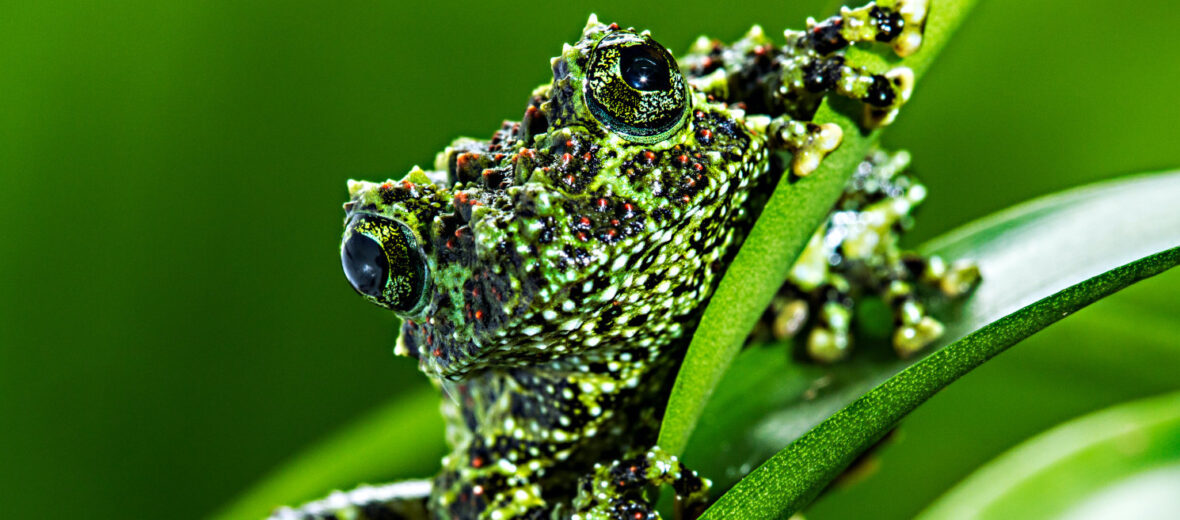
They may look like a clump of moss and nothing more, but that’s exactly what the Vietnamese mossy frog is going for here. All that camouflage helps keep these frogs safe from predators looking for a quick meal. Their skin is bumpy, green, blotched with dark spots, tubercules, and spines. These hide and seek champions are found in flooded caves and on the banks of mountain streams of Mao Son and Tam Dao mountain ranges of northern Vietnam. They live at altitudes of up to 3,000 feet. The Vietnamese mossy frog, aka Tonkin bug-eyed frog, is listed as Least Concern by the IUCN.
First the Stats…
Scientific name: Theloderma corticale
Weight: Up to .5 ounce
Length: Up to 3.5 inches
Lifespan: Up to 15 years
Now on to the Facts!
1.) When threatened, the mossy frog will huddle into a ball and lay motionless, in order to appear like a ball of moss.
2.) They prey on insects and other small invertebrates.
3.) Their predators are larger amphibians, reptiles, bats, and humans; destroying their habitat due to logging and clear cutting.
4.) These cool critters are nocturnal (active at night), like most frogs.
5.) The first successful captive breeding of these frogs took place in England and as a result of their success, captive-bred mossies have been distributed to the pet trade market, world wide.
But wait, there’s more on the Vietnamese mossy frog!
6.) Mating season lasts from April – June.
7.) Females lay between 10 – 30 eggs on the shoreline, just in or right near water. This way the tadpoles don’t have far to go to drop into the water.
Did you know…?
Mossy frogs are able to throw their voices, like a ventriloquist, up to 13 feet!
8.) The eggs hatch in about 3 weeks. The tadpoles go through the standard metamorphosis into adult frogs in about 1 year.
Now a Short Vietnamese Mossy Frog Video!
Also, check out the Critter Science YouTube channel. Videos added frequently!
Want to suggest a critter for me to write about? Let me know here.



